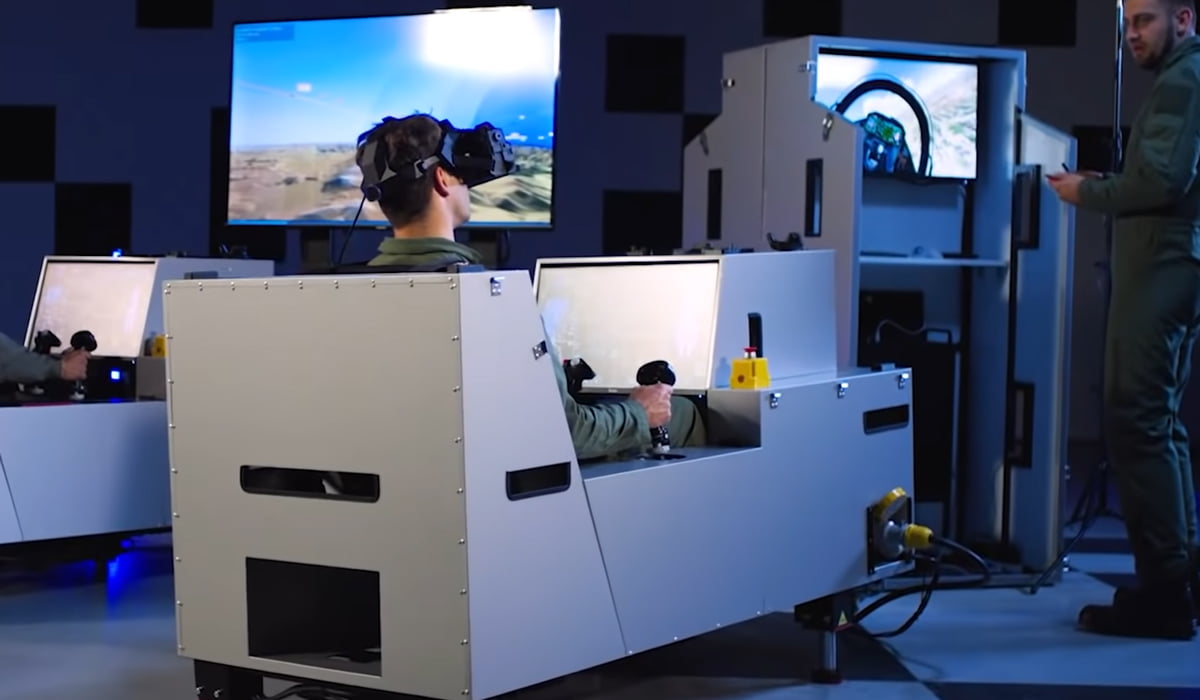VRgineers introduces realistic mixed reality flight simulator

Czech B2B VR company Vrgineers introduces a new VR flight simulator for military pilot training.
Vrgineers is partnering with U.S. defense contractor Lockheed Martin for the new training hardware. The Czech VR headset manufacturer is contributing its XTAL 3 VR headset and tuning it to Lockheed Martin's "Prepare 3D Version 5" simulation platform.
Realistic VR haptics through a real cockpit replica
The special feature of this setup is the combination of virtual flight with realistic cockpit handling. Pilots in training see the virtual flight environment and the interior of their aircraft in the VR headset. The XTAL headset offers 4K resolution per eye, a wide field of view of 180 degrees and integrated eye tracking.
At the same time, the cameras integrated into the VR headset allow pilots to operate the simulator's physical cockpit with their hands. The operation is so precise that pilots can even use it to train their muscle memory, according to Vrgineers. The Prepare platform integrates hydraulic movements into the training to support the virtual flight experience.
“Flying with the XTAL in a full-motion hydraulic sim and rolling in on a low-level bombing run literally felt like I was back in the cockpit, heart rate elevated, mental focus 100% on threat avoidance and target acquisition – incredible,” says Bryant Church, U.S. Navy Aviator.
The platform is optimized for the F-15, F-16 and F-35 fighter jets and is expected to be usable for other aircraft as well. Multiple simulators can be linked together to train joint flight maneuvers. According to Vrgineers, research projects funded by the U.S. Air Force and U.S. Navy are underway to further develop the simulation technology with XTAL headsets.
Video-XR on the rise
According to Marek Polčák, CEO of Vrgineers, the mixed reality simulation station is less expensive than the large-screen domes commonly used in pilot training and requires less space. He expects that these improvements will increase the training time in the simulator.
The flight simulator is another example of the advance of video mixed reality lately. Other VR companies, such as Varjo, also offer XR devices and capabilities, but as high-priced commodities for the industry.
It is foreseeable that this form of mixed reality will also arrive in the consumer market. Meta is already hinting at this with Horizon Workrooms with Quest 2 - here, the real desk including mouse and keyboard becomes a virtual work surface. The upcoming Cambria glasses should further improve the technology, as should Apple's XR headset, which is expected at the end of the year.
Note: Links to online stores in articles can be so-called affiliate links. If you buy through this link, MIXED receives a commission from the provider. For you the price does not change.